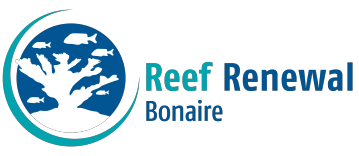By RRFB Intern Jordan Edwards
Coral reef health is determined by many ecological factors including water temperature, water quality, and sunlight exposure, just to name a few. However, there is a lesser-known contributor that also affects the health of coral reefs: grazers. Grazers on a coral reef hold the same importance as cows in a pasture, only they’re responsible for eating algae that builds up on the reef.
Two of the most common grazer species in the Caribbean are parrot fish and sea urchins. However, recent years have seen a significant decline in Diadema antillarum, the long-spined sea urchin. Keep reading to explore the unique relationship between long-spined sea urchin and coral in the Caribbean, and how this symbiosis affects the health of reef ecosystems as a whole.
A Mutualistic Relationship
The relationship between sea urchins and coral is crucial to the health of both species. Together, they form a mutualistic relationship where sea urchins graze and eat algae forming on coral faces. In the process, the coral is cleaned and avoids resource competition from algae.
Though the presence of algae holds crucial benefits to coral and the ecosystem overall, unrestricted populations can outcompete coral for nutrients and sunlight, leading to declines in coral cover.1 By managing algae growth, Diadema is vital to coral populations in the Caribbean Sea.
Diadema Declines and Aftermath
D. antillarum, however, has experienced several instances of decline and major die off events within the last fifty years. The most drastic event occurred between 1983 and 1984, when a water-borne pathogen killed off between 95-99% of the Caribbean population.2 An article from the Journal of Experimental Maine Biology and Ecology states that it was “the biggest die-off of echinoids recorded so far”. 1
An instant spike in algae immediately following the die-off led to significant ecological shifts within reef ecosystems in the region, mainly less coral cover.1 Without a stable urchin population to control algae growth, coral may also become more susceptible to diseases.3 By impairing coral recruitment and development, overgrowth makes it harder for coral to recover from outside disturbances – such as stony coral tissue loss disease (SCTLD) here on Bonaire.
“Ever since the big Diadema die off in the 80s, we have seen our reefs rapidly decline. It was tragic to be confronted with another major die off in 2022, especially in a time where corals need Diadema more than ever. Diadema are key species for Caribbean reefs, because without them restoring the balance of the coral reef ecosystem will be even more challenging.”
– Alex van der Last, Research and Engineering Coordinator | SECORE International + RRFB
During the 40 years since the 1980s die off, the urchin population slowly recovered, though not quite as strong as before. However, the Caribbean is facing another aggressive sea urchin die off event in 2022, affecting populations in Saba, Bonaire, Curaçao, and multiple other islands. Though the cause of the 1980’s die off was never identified, scientists found that a type of ciliate is responsible for the most recent event.
In terms of large-scale effects, macroalgae overgrowth on coral heads within a matter of days.3 Along with harsh weather patterns, global warming, and additional diseases, this is a recipe for disaster for coral decline.2 A recent paper highlights that dead coral heads are a primary settlement substrate for young coral looking to settle, and algal cover directly impedes that process.4 It also suggests that younger corals may mature more quickly and begin spawning sooner due to stress of algae growth.4 Another study demonstrates that lack of sea urchins is a direct cause of coral recruitment failure and ultimately lowers the resilience of coral reef ecosystems in the Caribbean.2
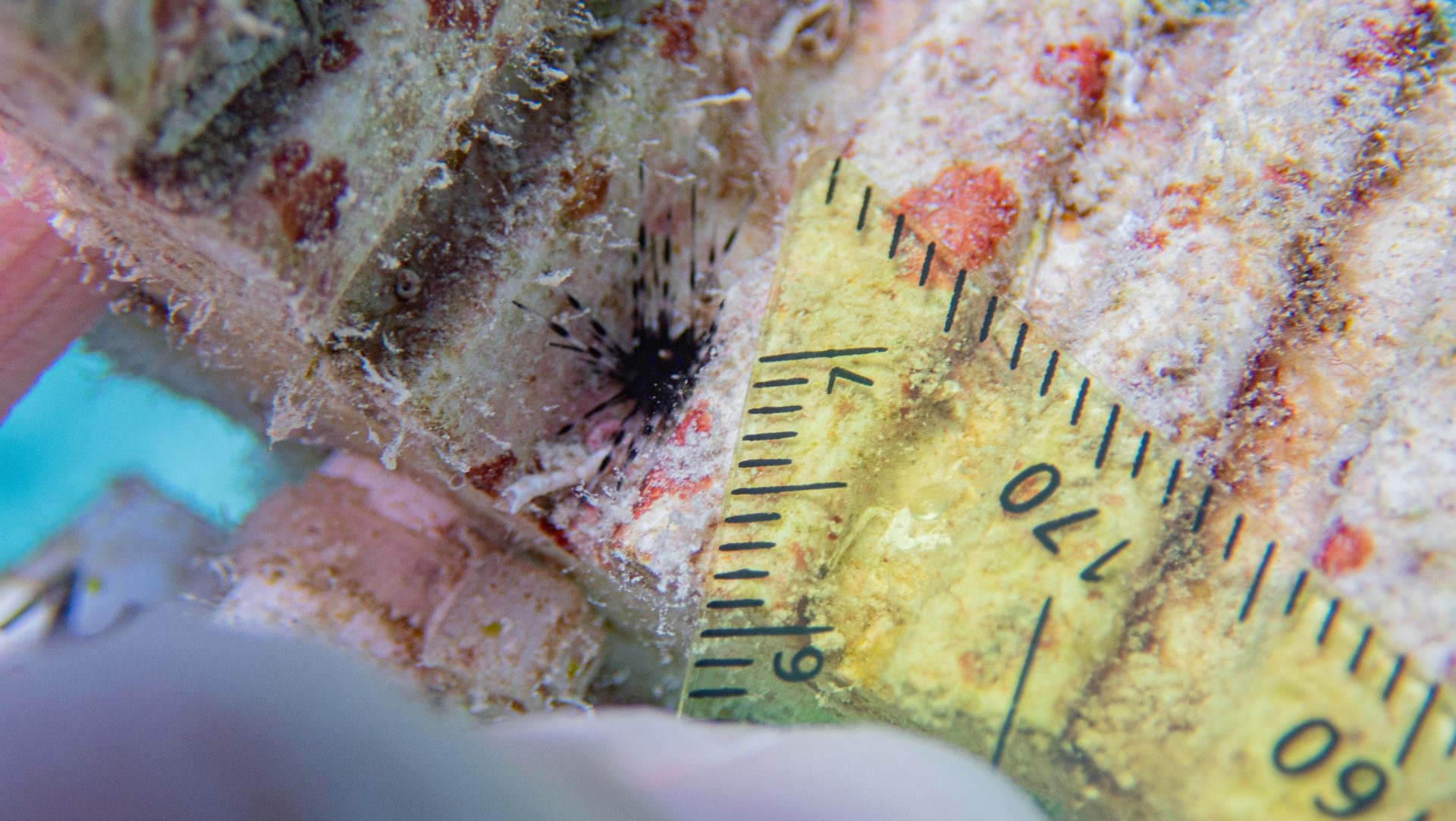
Urchin Restoration Techniques
Several restoration methods are currently being researched to help maintain and recover urchin populations recover, much like RRFB’s work with corals. “Bio balls” are temporary settlement substrates, providing a protected place for young urchins to settle on before they grow large enough to graze the reef. Bio balls have been used on Saba and have been deemed an effective tool for urchin revitalisation.3
Artificial reefs are actively being studied for their potential to promote new fish and algae colonies, among other ecosystem services.5 A recent breakthrough study has shown that “shaker bottle” cultivation of urchin larvae was extremely successful.6 Shaker bottle cultivation allows for urchin larvae to be propagated and nurtured in a secured and controlled setting, similar to coral nurseries and aquaculture facilities.6
Photos on the right are from a 2022 workshop in Saba that brought together researchers, practitioners (including RRFB’s managing director Francesca Virdis), and managers from around the Caribbean. The group explored the overall status of Diadema populations, and discussed best practices and guidelines for restoring them.
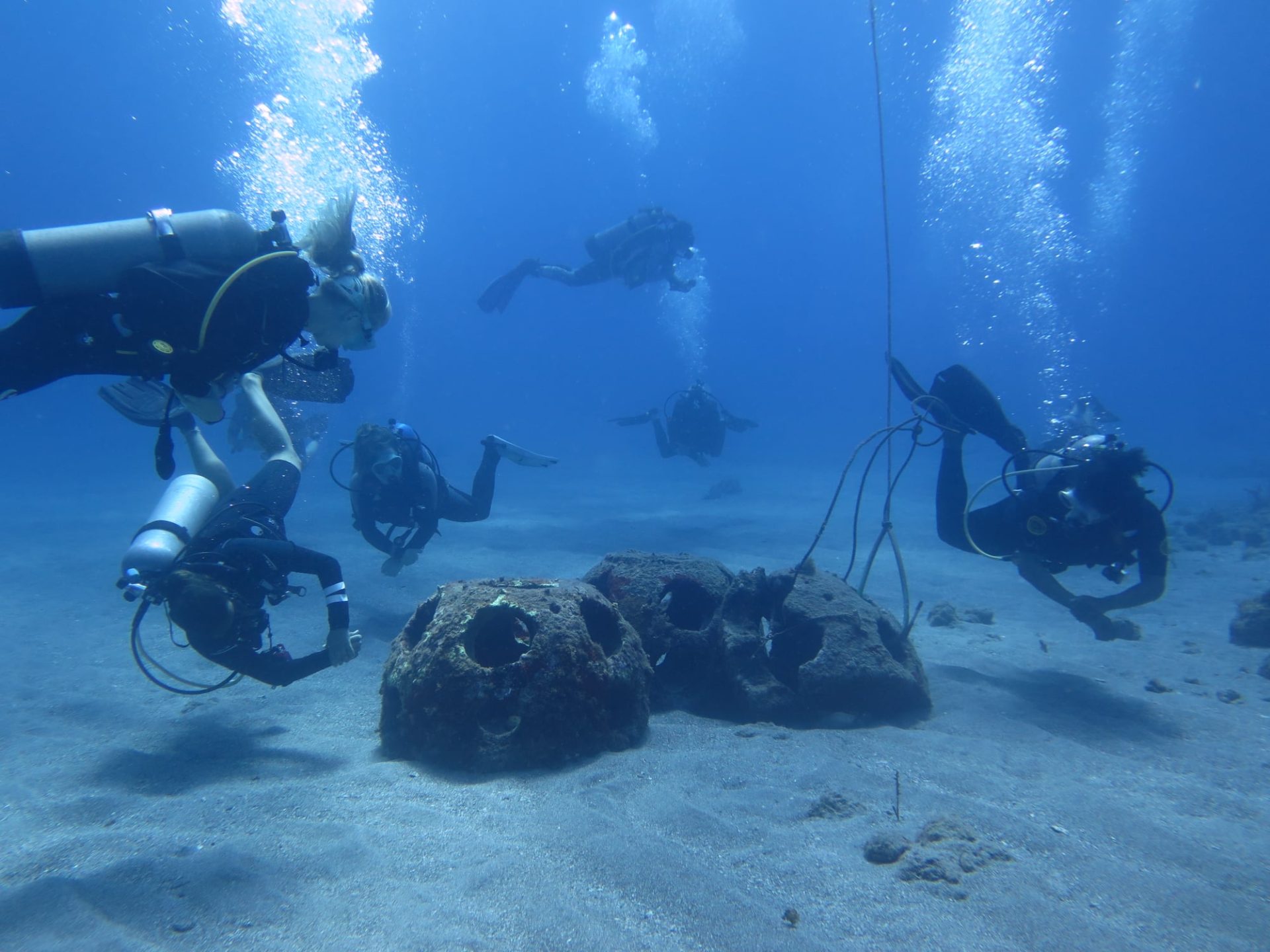
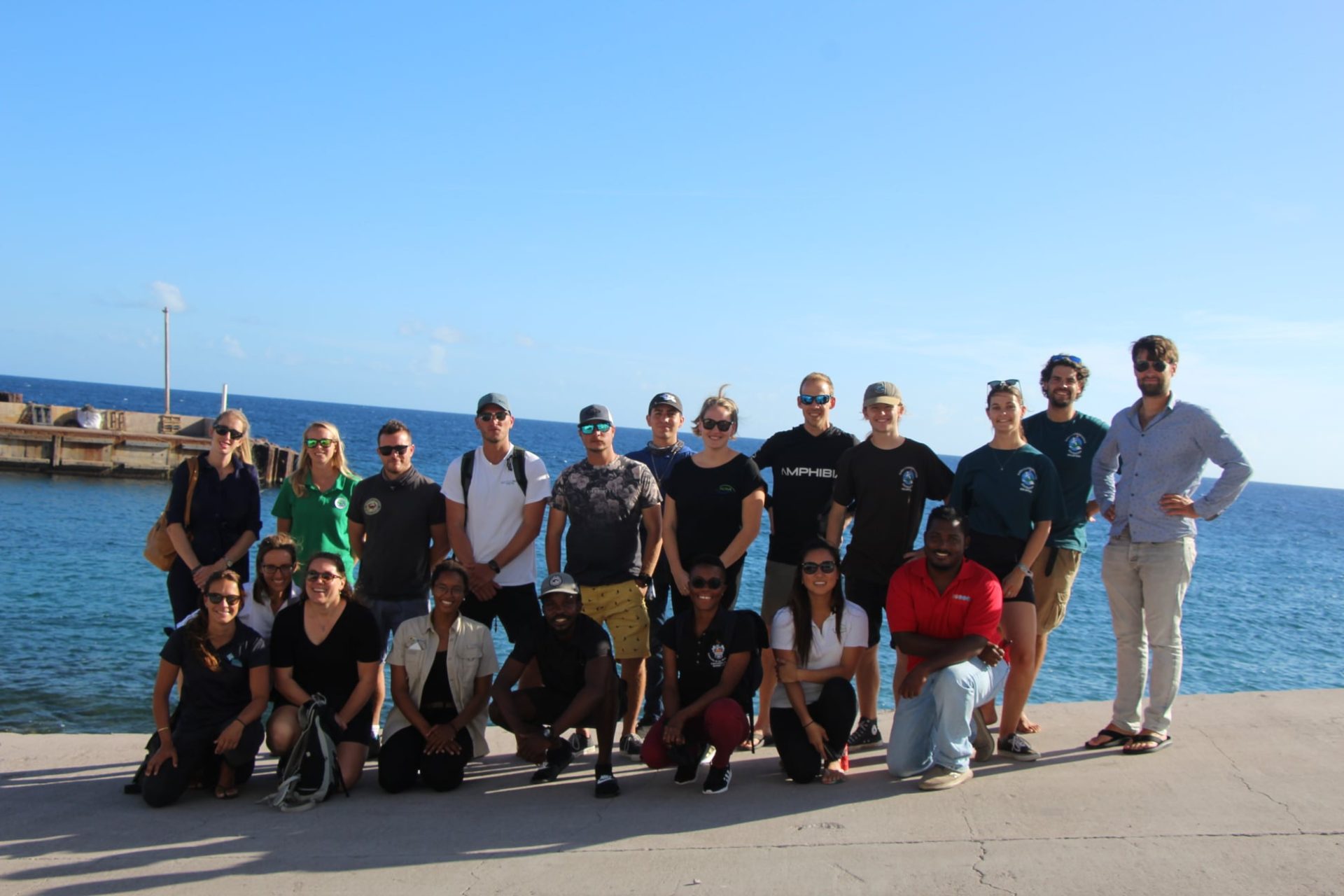
How All of Us Can Help
Climate change and rising sea temperatures are perhaps the largest enemy of sea urchins and coral reef ecosystems as a whole. Localized impacts can be mitigated by the average diver, but it will take a collective effort as a planet to reduce global warming impacts. However, as large-scale restoration methods exhibit success, it’s important to remember that the recreational dive community can also make a difference. Divers should avoid disrupting Diadema underwater and rinse gear between dives to reduce the spread of ciliate parasites.
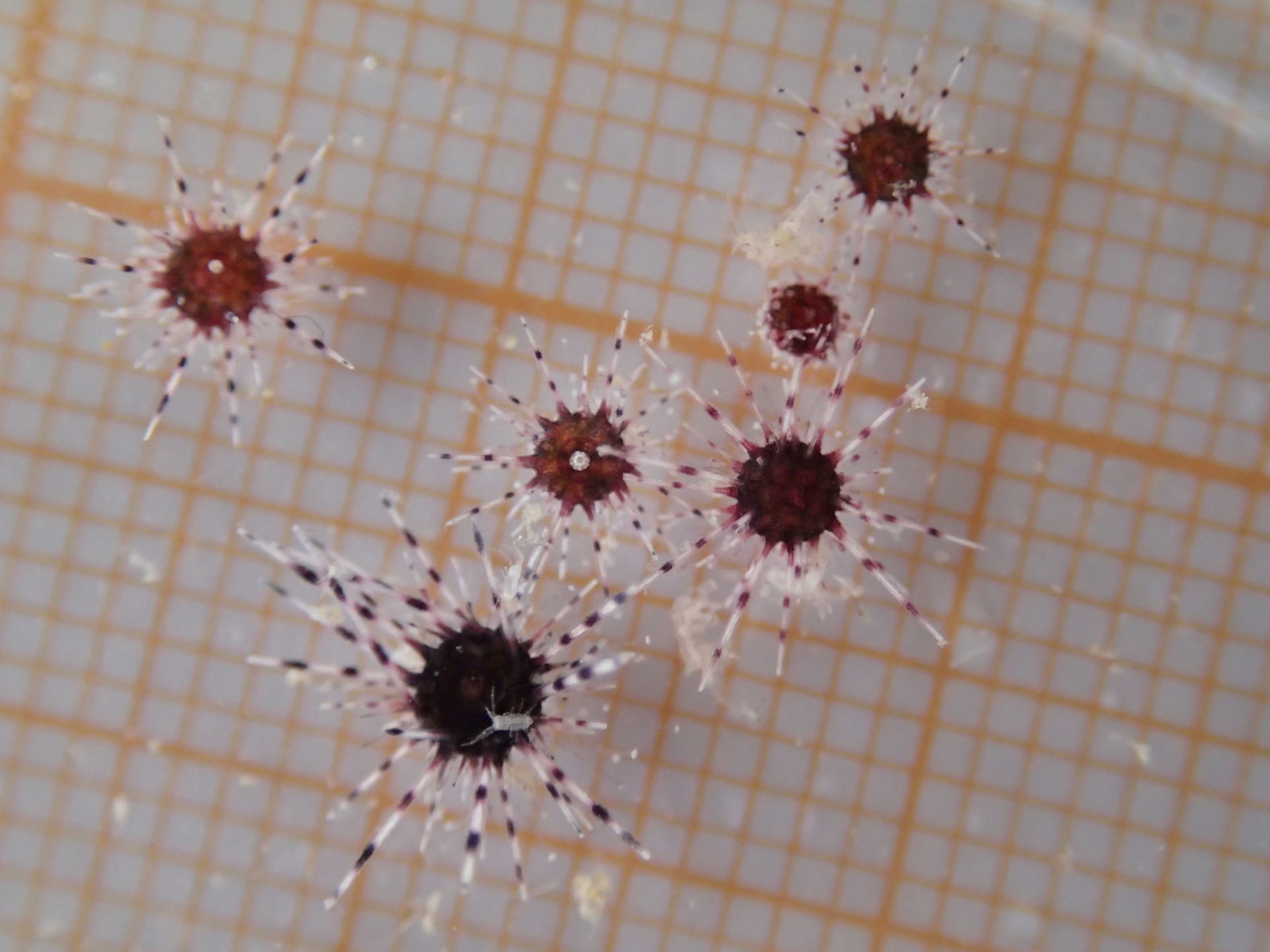
1. Alwin Hylkema, Adolphe O. Debrot, Marit Pistor, Eelke Postma, Stacey M. Williams, Kimani Kitson-Walters, High peak settlement of Diadema antillarum on different artificial collectors in the Eastern Caribbean, Journal of Experimental Marine Biology and Ecology, Volume 549, 2022, 151693, ISSN 0022-0981, LINK
2. de Breuyn M, van der Last AJ, Klokman OJ, Hylkema A. 2023. Diurnal predators of restocked lab-reared and wild Diadema antillarum near artificial reefs in Saba. PeerJ 11:e16189 LINK
3. Hylkema Alwin, Debrot Adolphe O., van de Pas Esther E., Osinga Ronald, Murk Albertinka J. Assisted Natural Recovery: A Novel Approach to Enhance Diadema antillarum Recruitment. Frontiers in Marine Science. Vol 9. 2022. LINK
4. Levitan, Don R. Best, Rachael M. Edmunds, Peter J. Sea urchin mass mortalities 40 y apart further threaten Caribbean coral reefs. 2023. Proceedings of the National Academy of Sciences. e2218901120. 120. 10. doi:10.1073/pnas.2218901120. LINK
5. Hylkema, A. (2022). Active interventions to rehabilitate Caribbean coral reefs: The use of artificial substrates to increase the abundance of herbivorous fish and sea urchins. [internal PhD, WU, Wageningen University]. Wageningen University. LINK
6. Alwin Hylkema, Adolphe O. Debrot, Marit Pistor, Eelke Postma, Stacey M. Williams, Kimani Kitson-Walters, High peak settlement of Diadema antillarum on different artificial collectors in the Eastern Caribbean, Journal of Experimental Marine Biology and Ecology, Volume 549, 2022,151693, ISSN 0022-0981. LINK
